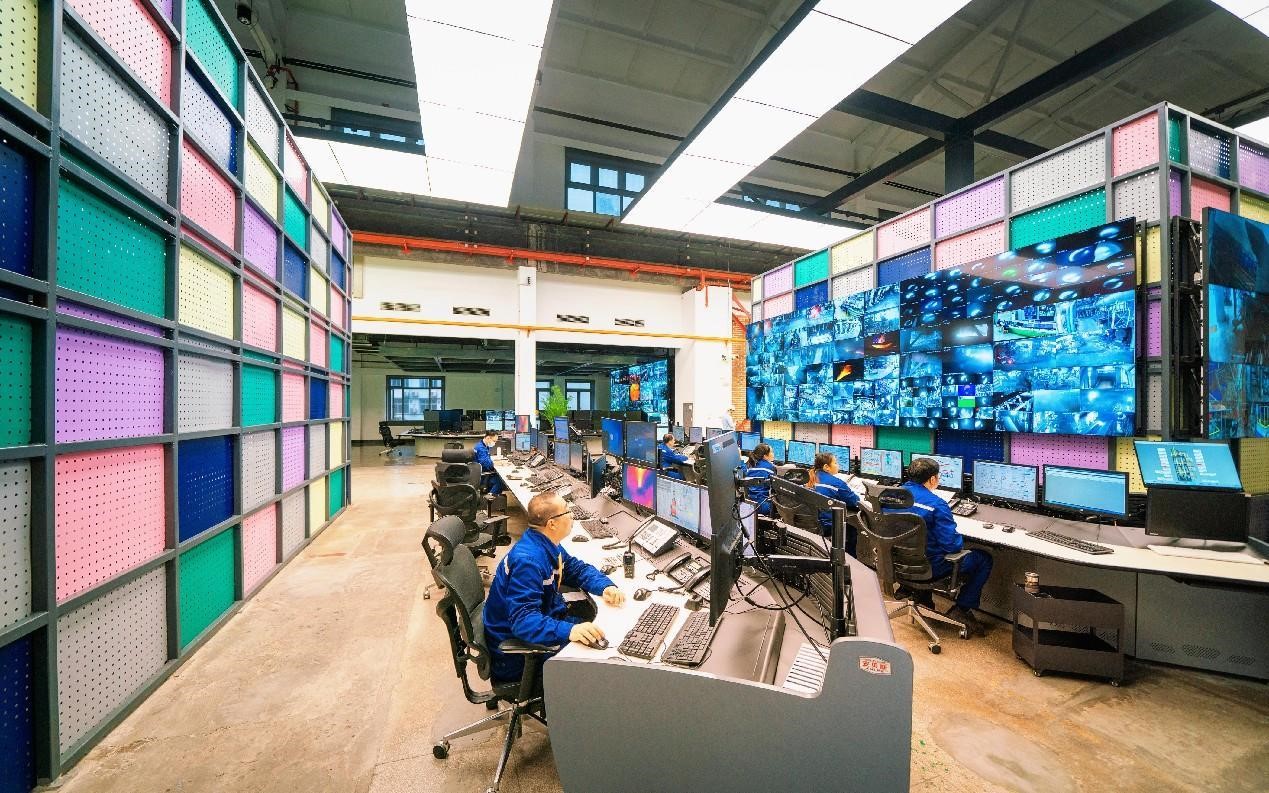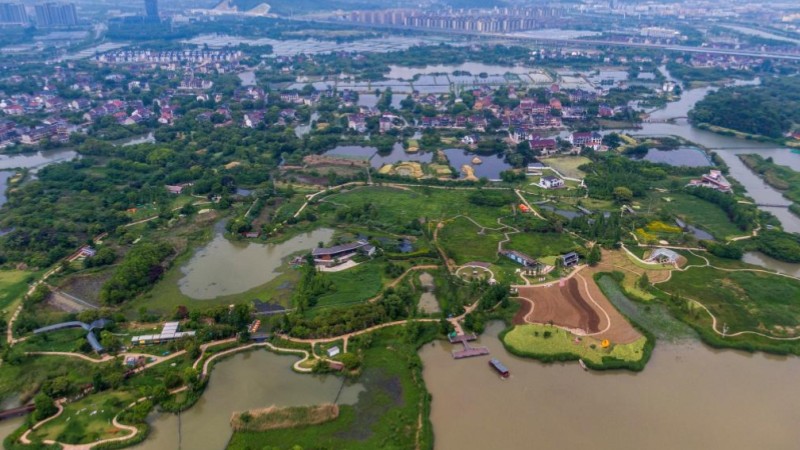To achieve greater development in green transition

Farmers pick tea leaves in a tea plantation with photovoltaic panels in Sanjie township, Shengzhou, east China's Zhejiang province. (People's Daily Online/Pan Weifeng)
A cup of tea is what every visitor to Wuyi Mountain, southeast China's Fujian province must taste.
Tea in this place is grown in a sound environment with lush forests and fresh air, and then stir-fried by intelligent devices in suitable temperature and humidity that can be controlled with just clicks on the screen.
Tea planting is a green industry, and tea-making is also pursuing low-carbon development.
In the past, tea had to be stirred and roasted for over a dozen hours, which consumed large amounts of charcoal. Today, with intelligent tea-producing systems, which are both environmentally friendly and energy-saving, the production has been lifted by about 35 percent and the comprehensive labor cost has been lowered by 20 percent.
Guided by China's "dual carbon" goals, the local government has developed electric tea roasting devices, making an important step toward greening the tea industry.
Apart from the tea industry in Wuyi Mountain, a series of other projects have been launched, such as a fishery-photovoltaic-energy storage project in east China's Jiangsu province, a photovoltaic dock in southeast China's Fujian province, and a low-carbon block featuring photovoltaic rooftops and street lamps in Chengdu, southwest China's Sichuan province. These projects have enriched the forms of green development and opened up new space for high-quality development.

Parts of wind turbines are being assembled in a workshop of a new energy company in Zhangye, northwest China's Gansu province. (People's Daily Online/Cheng Lin)
The "dual carbon" goals proposed by China, peaking carbon dioxide emissions before 2030 and achieving carbon neutrality before 2060, generate a number of opportunities for green development.
Statistics show that China's major power generation enterprises completed an investment of 126.4 billion yuan ($18.27 billion) in power supply projects from January to March this year, up 55.2 percent year on year. In particular, the investment in solar power generation projects surged by 177.6 percent, and that in nuclear power generation increased by 53.5 percent.
This proves that to reduce emissions is not to reduce productivity, but to promote the green transition in economic development and seek greater development in the green transition.
China's new energy sector features randomness, intermittency and volatility, while its resources and demand face a distribution issue. To ensure a reliable and stable supply of new energy, China is accelerating the construction of power supply, power grid and power storage projects, which drives relevant investment, promotes the development along the industrial chain and helps with regional employment.
For instance, an ultra-high voltage power transmission project is being constructed between Sichuan province and Chongqing municipality. According to estimation, the project has drawn nearly 90 billion yuan of investment in equipment manufacturing, power supply construction and other sectors.
It is expected to attract more investment, make greater green contributions to economic growth, and boost energy security.

Photo shows an intelligent production center of an iron and steel company in Shaoguan, south China's Guangdong province. (People's Daily Online/Zhang Mingwei)
A number of intelligent B&B hotels have been built on Meizhou Island in Putian, Fujian province, which are equipped with photovoltaic and energy storage equipment, and can be controlled with mobile applications. According to the owners of these hotels, they can save more than 10,000 yuan in electricity costs each year.
Steel, petrochemical and other traditional industries are also working to speed up the development of low-carbon techniques and digitalization. Meanwhile, a number of new energy companies are now focusing on the development of new products and new markets.
For example, last year, China's production of photovoltaic polysilicon, silicon wafers, cells, and modules all increased by over 55 percent year on year. More and more industries are grasping the opportunity of green development to embrace new potential and achieve upgrades amid the green transition.
The rapid development of the new energy sector and the wide application of distributed energy and storage equipment have posed bigger challenges for the safe, efficient and optimized operation of the power system. Therefore, technological innovation must be advanced.
A series of key technologies and equipment have been put into use. Jiangsu province has built a holographic digital power grid to reduce the troubleshooting time; Fujian province is exploring the low-voltage flexible direct current transmission technology to facilitate the supply of photovoltaic electricity; Sichuan province has made breakthroughs in the development of the cascade water-photovoltaic-storage technology, which will better help connect new energy projects to the power grid.
It is believed that China will enjoy bright prospects in the innovation and application of green and low-carbon technologies by making full use of its institutional advantages, resources, technical potential and market vitality.
Photos
Related Stories
- Green financing makes development even greener
- China's retail sector sees rapid green transition
- China has over 1,500 green hotels
- China strengthens environmental protection, pursues green and low-carbon development over 5 years
- China to foster a new relationship where man and nature can both prosper and live in harmony
Copyright © 2023 People's Daily Online. All Rights Reserved.









